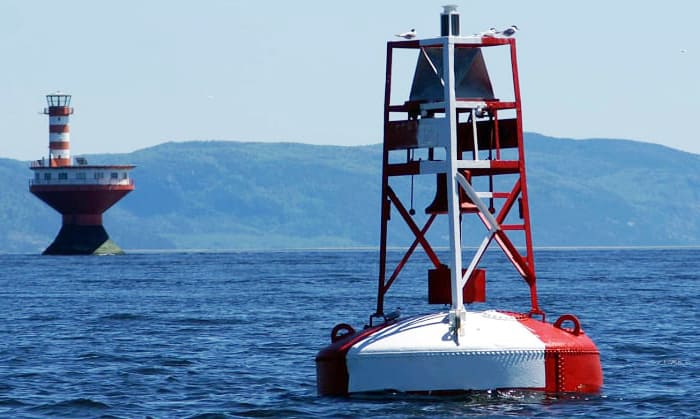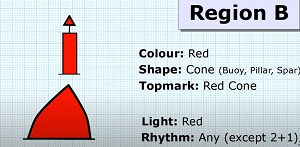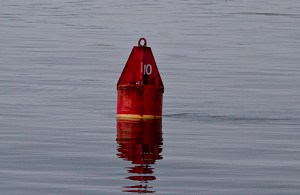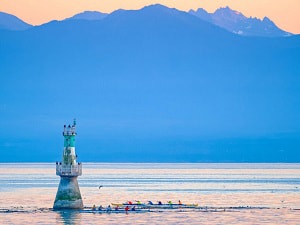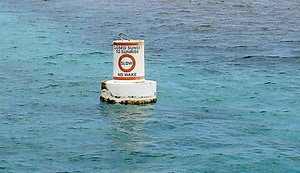What is a control marker? Instead of the traffic lights on the streets, a control marker buoy is used on waterways and passages. It’s represented by buoys, marks, lights, and beacons. These are essential for complying with the IALA or International Association of Marine Aids to Navigation and Lighthouse Authorities.
Since this control marker can be in different forms, you may question: ‘What does a control marker look like?’
Control markers are in different shapes, marks, colors, and light combinations. Every boater should know how to identify them so they can sail safely. There are several of them but it will be easy to memorize and tell them apart.
Table of Contents
Knowing the Various Symbols of a Control Marker
To keep yourself safe and those you come across when sailing, you have to be familiar with every boating control marker. Spend some time reading each item. Which of the following is a control marker you haven’t encountered yet?
1. Lateral Markers
These are for marking safe water zones and directing traffic. Every marker is associated with numbers and colors.
Numbers and Colors
Note that every number and color have the same meaning even if they appear in different buoys.
- Red color, red light, and an even number
You would see this on the starboard on the right side of your vessel when heading upstream and going to an open sea. The number increases without interruption.
- Green color, green light, and an odd number
It’s the same as the previous marker as it’s used when proceeding upstream and entering an open sea. But this green light is located on the left side where the port is. Similar to the red light, the number consecutively increases.
- Combination of green light and red lights or colors
These are also referred to as junction buoys where two channels intersect. They are set to indicate the primary channel if there are two. The primary channel is on the left if the green light is on the top. It’s replaced by a red light when it’s on the right side.
Furthermore, here is the complete guide about red and green makers for your reference.
Shapes
- Nun buoy
This is in the form of a cone with even numbers and red marks. There’s a mark on the channel’s edge on the right side or starboard during the entrance to the open sea or upstream.
- Can buoy
These are cylindrical buoys with odd numbers and green marks. They serve as markers for the left side when the vessel enters the open sea or goes upstream.
Know more about lateral markers here!
2. Other Kinds of Markers and Buoys
Lighted Buoy
You’ll immediately notice the lateral marker colors, shapes, and numbers. A corresponding colored light is also present.
- ‘Red right returning’
This is the term for passing through the correct course when heading back from the open sea or upstream.
- Daymark
This is a permanent sign on structures like posts erected in the water. The common ones are the red triangle for nuns and green squares for cans. Some of them have lights.
- Emergency wreck marking buoys
It’s a control buoy that identifies dangers and wrecks. You’ll find them with blue and yellow stripes in a spar or pillar form. There’s a yellow cross on the top. The flashing of blue and yellow lights alternates at a pace of one second. In addition, darkness goes on for half of a second.
3. Cardinal Markers
Navigating the safest and deepest waters is possible through cardinal markers, but you have to use a compass. To be specific, they’re used to mark:
- The area that directs to the deepest water
- The side or passage for avoiding danger
- Some features in a channel such as a shoal’s end, bend, and junction
The cardinal markers have yellow and black bands with a pair of cones above them. The different directions are shown so you can determine the safest and deepest part when boating.
North cardinal marker
This tells you that there’s safe water to the marker’s north. It has a top cone that points up and there are quick, non-stop flashes of white light.
South cardinal marker
The cone points down as an indication that you’ll be safe to go to the southern part. Six quick flashes of white light will be seen at night followed by a long flash for 10 to 15 minutes.
East cardinal marker
This marker shows that you’ll be safe to the east. Two top cones are so close to creating an egg shape to make it easy to remember ‘east’ as both words start with ‘E’. Three white light flashes every 5 or 10 seconds.
West cardinal marker
To the west of this marker, you’ll find a safe area. The top cone is arranged opposite the east cardinal marker. So, it looks like a glass of wine. Thus, you can easily think of ‘west’ because of the letter ‘W’.
4. Non-Lateral Markers (for lakes and rivers)
You should know that there are no numbers on navigation markers of the Western Rivers System. Although they may have numbers on day markers, they’re not associated with the channel’s right and left sides. These numbers only show the length of the river’s mouth.
Furthermore, non-lateral markers tell you that the water edges are safe. More of their functions are:
- Giving information and directions
- Warning of hazards and obstructions
- Marking controlled areas
- Marking closed or excluded area
Safe water marker
With red and white vertical stripes, it tells you that the water on both sides is unobstructed. It’s a marker for fairway and mid-channel, but it can also be transferred to either side.
Inland water obstruction marker
You’ll find this marker with black and white stripes, and it means that there’s an obstruction to navigation. It’s not safe to pass through these buoys and nearby shore.
Mooring buoys
The prominent feature of the mooring buoys is the blue horizontal band on a white background. It’s displayed on marinas and areas that are intended for anchoring. These buoys can be tied up.
Check the detailed guide about non-lateral markers now!
Finalizing the Important Points
What is a control marker? There are various markers and buoys that you can see when sailing but they’re all about everyone’s safety. Some of them have lights so they can warn or send you a message at night. Don’t take these things for granted to have an enjoyable sailing trip free from any danger.

Ten years of enjoying countless trips on boats never made me love them any less! So I am here to put all those experiences into good use for other boaters who want to have a safe and fun trip with their friends and families.

